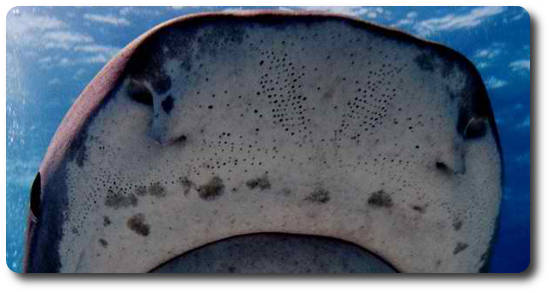
Today
was a start to a new chapter for me in the Bahamas because I was assigned to
work with a new PhD student today named Lillian from OSU. She is interested in studying species of fish
(cleaner gobies) that clean the gills of larger fish of parasites and how this
mutually beneficial interaction between cleaner and client species (the fish
cleaned of parasites are called client species) could be altered by the
presence of invasive lionfish (cleaning picture from the internet). Her work will be mostly based in the patches
this summer which lie out in the uniformly shallow waters of the sound directly
off shore of CEI. Because Lillian had
some things she needed to do before our trip out, we didn’t leave until around
11 am to go out to the patches. In the time between when we left and
breakfast, I went over to the CEI office to finalize Erica’s planned dates that
she will be staying at CEI. It turns out
that the group that would have a member stay with me while Erica is here pushed back their arrival date to June 30th. This will work out better for us such that
Erica and I will be able to vacation up island at the end of her stay here on
Eleuthera.
Once
we headed out from CEI, we made our way to a large array of patch reefs in the
sound. My job today was to approximate
the sizes of the patches, describe their structure and coral composition by
percent cover of coral, and to count and size lionfish. Since the patches are only in about 10 feet
of water, it is much easier, safer, and quicker to snorkel for the recon of
these reefs. We moved quickly from patch
to patch spending about 5 minutes or so at each one. Our boat driver Jeremy live boated for us so
that we didn’t need to anchor at each site.
After 6 or so reefs surveyed, we stopped for lunch at around 1 pm when
it was super calm and sunny out. Over
the course of the next hour though, it began to get cloudy once again and the
winds started to pick up. Soon the wind
swell was reaching 3-4 feet tall with heavy rains. It got to the point where it was no longer
safe for us to be pulling ourselves onto the boat in such conditions. At our last site, we were uncomfortably being
tossed around on the surface as we took data.
As we were about to leave and get back to the boat, I noticed a lionfish
that I hadn’t seen while I was surveying.
I dove down to estimate its size and as I made my way back up to the
surface, I saw a large nurse shark swim out of nowhere underneath me. It proceeded to stick its head under a small
ledge where I had spotted 2 Caribbean lobsters hanging out. I’m pretty sure this nurse shark was looking
for a nice tasty lobster to eat and it was astonishing to see it just wedge its
head underneath a ledge like that to get one.
I sat and watched the shark thrash about under the ledge for about 15
seconds before I swam back to the boat so we could get out of there.
Once
we got topside, it was pouring with the winds howling all around us. We started back to CEI very slowly so that we
wouldn’t roll in the large, choppy swell.
As we made our way through the storm, we were constantly being splashed
and thrown around by the relentless wind swell.
As this was happening, all Lillian and I could do was laugh about it. It was certainly nice to be in the company of
a person who found the entertainment and humor in a situation like that. Even though we weren’t in any immediate
danger, situations like these would make many people overly uncomfortable. But for Lillian and I, we thought it was a
pretty fun to experience. Once we got
back to CEI, we cleaned up and ended early.
We had planned on coming back in later and looking at more patches but
of course the weather just didn’t cooperate today.

It
was another day of storminess at Eleuthera in the Bahamas and so it was nice to
hunker inside and to work on my blog and emails. After dinner, we did our logs as usual and
soon thereafter marveled at Tye’s enormous catch of the day. She captured a 41 cm lionfish today before
the storm hit them out on the outer side of the island. Even though they planned to release it out on
one of Tye’s high density lionfish reefs, they didn’t end up having enough time
after having to wait out the storm in a nearby harbor. As a result, she brought the lionfish back to
CEI and it will soon be a nice meal for us (pictured here). We decided to wait on filleting the fish so
that the lionfish research group here at CEI could remove the gonads and
stomach for analysis. Gonad mass as well
as stomach content can tell you much about the how often the fish may reproduce
and what it has recently been eating.
Sometimes, researchers here at CEI have found as many as 30 or more
juvenile fish inside the stomachs of large lionfish like this one which is
pretty incredible. After snapping some
photos, we all retired to our rooms and I am now finishing up my blog for the
night. Hopefully I will get to looking
at some possibilities for lodging for Erica and my trip up island tonight
before bed. Until later.




























